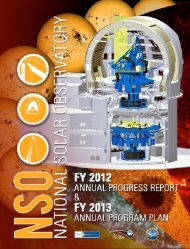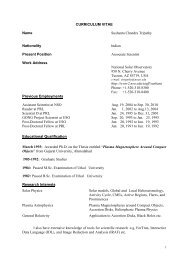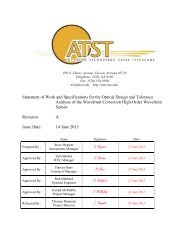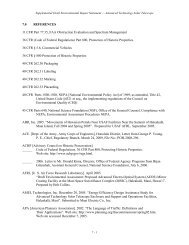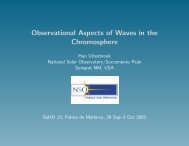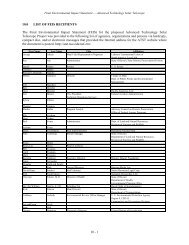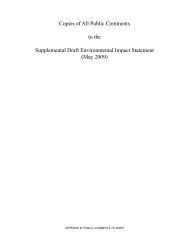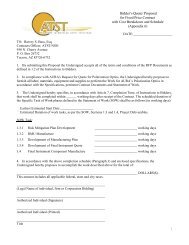F2 - ATST
F2 - ATST
F2 - ATST
You also want an ePaper? Increase the reach of your titles
YUMPU automatically turns print PDFs into web optimized ePapers that Google loves.
Cultural Surveys Hawai‘i Job Code: HALEA 2Traditional and Historic Backgroundcontinuous series, known universally to cultural anthropologists as the “Maui Cycle” (Luomala1949).Legends of the goddess Pele are also well known throughout Polynesia. In Rarotonga, Pere,the fire goddess, is the daughter of Mahuika, and it is from her that Māui (the demi-god ofHawai‘i) obtains fire for his family. Pere is driven away from Raratonga by Mahuika, and sheflees to Va-ihi (Hawai‘i). In French Polynesia, Pere exists as the goddess of volcanoes, and inAotearoa (New Zealand), she is known as Pele-honua-mea. In Hawai‘i, Haleakalā was once herhome, but she is now believed to reside on the island of Hawai‘i, at the active volcanic vents ofKīlauea.The traditional lore of Polynesia was recorded by a number of early visitors to the islands ofthe Pacific, and those traditions that include the Hawaiian demi-god Māui, the fire goddess Pele,and references to Mauna Haleakalā are summarized in the following table (Table 1).Table 1. Summary of Traditions Related to HaleakalāLegend Source PageNo.How Māui snaredthe sunArmitage, GeorgeT. and Henry P.Judd (Ghost Dogand other HawaiianLegends)Synopsis61 Reference to the sun rising over the Ko‘olau Gap: (“Hemade a trip over the mountain ridges and across the plainsuntil he came to Mount Haleakalā . He first saw the sunthrough the Koolau Gap and then, like a giant disc, itwheeled over the top of the black crater walls and thence upinto the heavens.”) Māui’s grandmother was said to havelived in Haleakalā Crater, and baked bananas in an ovennear a wiliwili tree where the sun would stop for a meal.Māui snares the sun Colum, Padraic 22,26 Māui observes the sun rising over Haleakalā through abreak in the chasm sides. The correct name for the crater isgiven as “A-hele-a-ka-lā (rays of the sun)”. As the suncomes through the chasm, it eats the bananas cooked byMāui’s grandmother, who lives at Haleakalā. Māui forcesan agreement with the sun, making longer days in thesummer and shorter days in the winter.How Māui snaredthe sun so that hismother’s kapacould dry.Legend of Māuisnaring the sunMāui conquers thesunMāui slows the sunColum, Padraic(Legends ofHawai‘i)Fornander,Abraham(FornanderCollection ofHawaiianAntiquities andFolk-LoreHapai, Charlotte(“Legends of theWailuku”)Lyons, Barbara(“Māui, The47-52 A hele-a-ka-lā (rays of the sun) is given as the old name forHaleakalā. Maui’s grandmother lives on the side ofHaleakalā. The legend explains the longer days of summerand the shorter days of winter.Vol. V:536,538Māui climbs Haleakalā to slow the sun and gives“Aheleakala” as the correct name of the mountain.Māui broke some of the sun’s rays with a coconut husksnare. Fornander’s informant, Lemuel K.N. Papa Jr. givesthe correct name as “Alehela” for the mountain. The namegiven to the sun’s rays which Māui found sleeping in a cavewas “Moemoe”.4-6 Māui travels to Haleakalā from Rainbow Falls, outside ofHilo, to battle the sun. This account gives the explanationfor shorter winter days and longer summer days.15-19 From the tip of Mauna Kahalawai (the meeting placebetween heaven and earth) Haleakalā could be seen. Māui’sAPPENDIX F (2): Supplemental Cultural Impact Assessment For the Proposed Advanced 10Technology Solar Telescope (<strong>ATST</strong>) at Haleakalā High Altitude ObservatoriesTMK (2) 2-2-07:008





